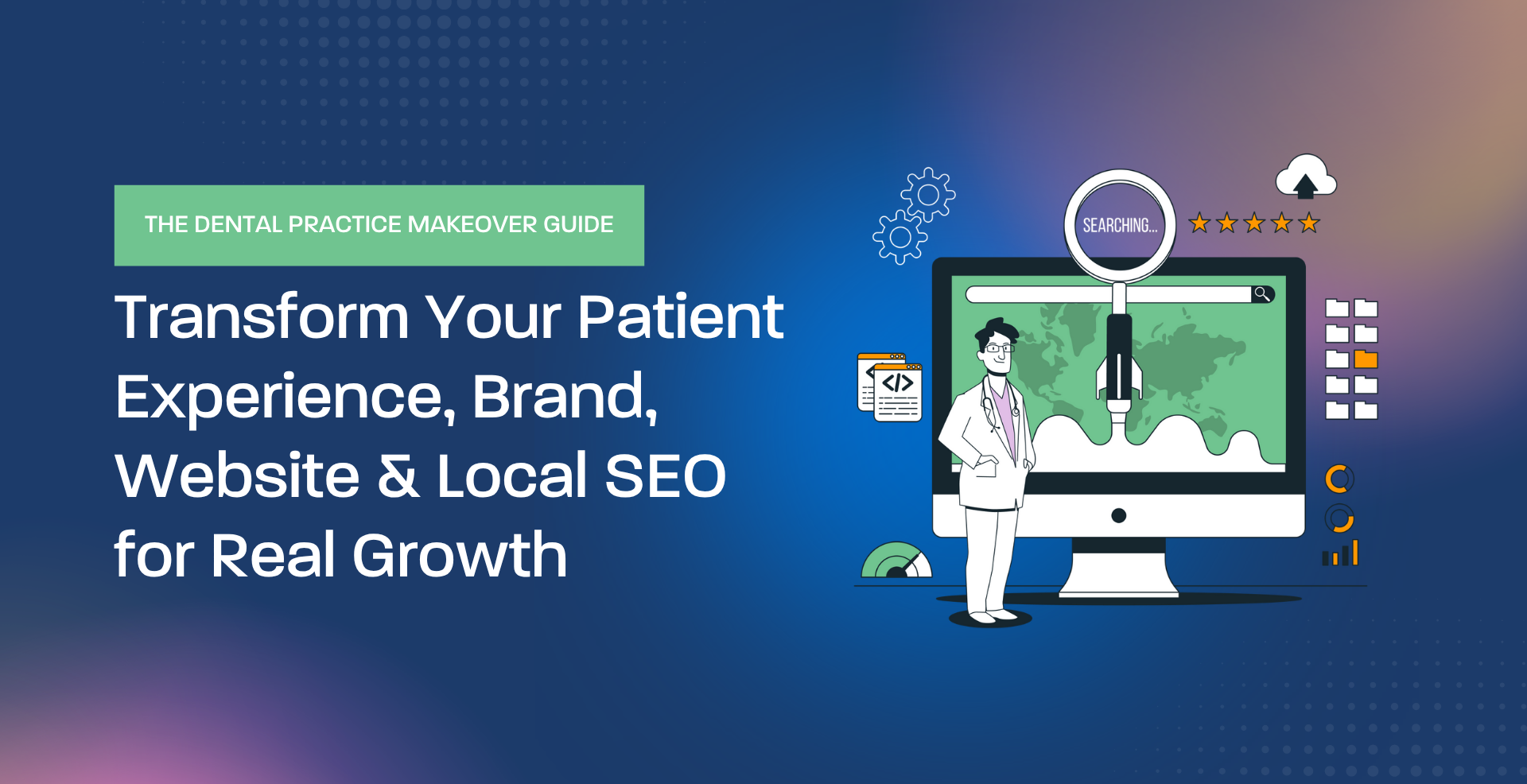The digital world has shifted dramatically especially if your product or service is consumer-centric. Our smartphones have become constant companions, acting as gateways to information, entertainment, and yes, even legal services, dental appointments, and finding the perfect marketing agency. In this mobile-first world, a website that isn’t optimized for smartphones is a major missed opportunity.
Google also found that 75% of users prefer mobile-friendly sites, and half reported frustration or annoyance when encountering sites that weren’t designed with mobile in mind. Responsive web design (RWD) results in a 15% increase in unique clicks among mobile users, according to a MailChimp study.
RWD extends to your email, too. For instance, 55% of email opens are now happening on mobile devices.
Let’s look into the technical aspects of mobile website optimization to understand the “why” and “how” of creating a mobile-friendly online presence.
P.S. Need expert help with design, email marketing, social media management, and other marketing services? Geeks For Growth can help you drive growth for your business!
Why Mobile responsiveness is essential for success
Imagine a potential client searching for a lawyer specializing in personal injury cases. They pull out their phone and land on your law firm’s website. Instead of a clear and easy-to-navigate page, they’re met with text that’s too small to read, buttons that are impossible to tap accurately, and images that take forever to load. Frustration sets in, and they hit the back button, never to return.
This scenario plays out far too often for businesses with websites not optimized for mobile. Here’s what you’re missing out on:
- Enhanced User Experience (UX): A mobile-friendly website is like a well-designed physical store. It’s easy to navigate, with clear buttons and menus sized for touchscreens. Users can find the information they need quickly and intuitively, leading to a positive first impression of your brand.
- Improved Search Engine Optimization (SEO): Search engines like Google prioritize mobile-friendly websites in search results. So, a responsive website is more likely to rank higher when users search for your services on their phones. This translates to increased organic website traffic and potential leads.
- Boosted Conversions: A smooth mobile experience makes it easier for users to take action. Whether it’s contacting you for a consultation, booking an appointment, or downloading a resource, a user-friendly mobile experience translates to more conversions for your business.

Technical considerations for mobile optimizations
Now that you understand the importance of mobile responsiveness, let’s explore the technical aspects of achieving it:
- Responsive Web Design (RWD) is Your Friend: Ditch the separate mobile website! RWD uses a single website that automatically adjusts its layout based on the device it’s being viewed on. This ensures a seamless experience for users across desktops, tablets, and smartphones.
- Frameworks Make Development Efficient: Popular RWD frameworks like Bootstrap, Foundation, or Tailwind CSS provide pre-built components and styles that make it easier for developers to create responsive websites.
Speed is King (and Queen)
Mobile users are impatient. Large images and bulky scripts can slow down your website’s loading time. Here’s how to fight the good fight:
- Image Optimization: Use tools like TinyPNG or Smush to compress image files without sacrificing quality.
- Script Minimization: Minimize unnecessary JavaScript and CSS code to reduce download times. Consider techniques like code splitting or lazy loading to load scripts only when they’re needed.
- Leverage Caching: Caching allows your website to store frequently accessed files (like images and scripts) on a user’s device, reducing the need to download them again on subsequent visits, leading to faster page loads.
Mobile-Friendly Navigation
Tiny text and buttons designed for desktops won’t work on a mobile screen. Here are some key points to remember:
- Clear and Concise Menus: Use large, easy-to-tap buttons for navigation.
- The Hamburger Menu (Those Three Lines): This is a space-saving option that hides navigation options until a user taps the menu icon.
- Prioritize Navigation Placement: Keep the main navigation bar at the top of the page for easy access on all devices.
Content is King, But Prioritize the Right Content
Not all content needs to be front and center on a smaller screen. Here’s a strategy to prioritize:
- Focus on the “Hero” Content: This could be your contact information, appointment booking options, or a clear call to action (CTA) like “Schedule a Free Consultation.”
- Progressive Disclosure: Provide the most crucial information upfront, with options for users to access deeper content if they’re interested. This can be achieved through accordions or expandable sections.
Testing and Refinement: Ensuring a flawless mobile experience
Don’t just assume your website is mobile-friendly. Here’s how to test and refine it:
- Online Testing Tools: Utilize Google’s Mobile-Friendly Test and other online tools to check your website’s responsiveness across different devices and screen sizes.
- Emulator Testing: Emulators are software programs that mimic different mobile devices on your computer. This allows you to see how your website looks and functions on various phones and tablets. Popular emulator options include Google Chrome DevTools and browser extensions like BrowserStack.
- Real-World Testing: Recruit friends, family, or colleagues with different smartphones to test your website. Observe their user experience and gather feedback on any navigation difficulties, slow loading times, or unclear information.
Beyond the Basics: Advanced Mobile Optimization Techniques
While the above steps provide a solid foundation, consider these additional strategies for a truly exceptional mobile experience:
- Accelerated Mobile Pages (AMP): AMP is an open-source framework developed by Google to create lightweight versions of web pages that load lightning-fast on mobile devices. This can be particularly beneficial for content-heavy websites like news publications or blogs.
- Offline Functionality: While not always applicable, consider offering limited offline functionality for your website. This could involve allowing users to save articles, browse pre-downloaded content, or access contact information even without an internet connection. This can be particularly valuable for users in areas with spotty mobile reception.
- Location-Based Services: If your business has a physical location, leverage location-based services to make it easier for mobile users to find you. Integrate Google Maps with your website and ensure your business address and contact information are accurate and up-to-date across all online directories.
- Mobile-Specific Content: Consider creating mobile-specific content that caters to on-the-go users. This could include shorter blog posts, bite-sized infographics, or video content optimized for mobile viewing.
Mobile Optimization examples for different professions
Let’s see how mobile optimization translates to different professions:
Lawyers
- Showcase Expertise: Display clear and concise descriptions of your practice areas with easy-to-understand language.
- Boost Trust: Highlight client testimonials with star ratings to build trust and credibility.
- Clear CTAs: Offer a prominent call to action like “Schedule a Free Consultation” with a large, easy-to-tap button.
- FAQ Section: Include a mobile-friendly FAQ section to answer common legal questions users might have on the go.
SMEs and Startups:
- Feature Products/Services: Prominently display your products or services with clear descriptions and high-quality images optimized for mobile viewing.
- Streamlined Contact: Include a user-friendly contact form or a “Get a Quote” button for easy inquiries.
- Mobile-Friendly E-commerce: If you have an online store, ensure a streamlined checkout process for mobile users, allowing them to complete purchases quickly and easily.
Dentists:
- Easy Contact: Display your contact information and appointment booking options prominently, including online booking if available.
- Positive Reviews: Highlight patient reviews with star ratings and snippets of positive feedback.
- Service Descriptions: Showcase your services with clear descriptions and mobile-friendly before-and-after photos (if applicable).
- Dental Care Tips: Consider adding a section with dental care tips and FAQs to establish yourself as a resource for potential patients.
Bonus Tip
Regularly monitor your website analytics to track user behavior on mobile devices. This data can reveal valuable insights into how users interact with your website and identify areas for further optimization.
By understanding the technical aspects of mobile website optimization and implementing the strategies outlined above, you can create a website that caters to the ever-growing mobile audience. Remember, in today’s mobile-first world, a website that isn’t optimized for smartphones is a missed opportunity. Take action today and ensure your website is ready to convert mobile visitors into loyal clients, patients, or customers.
Knowing the basics of an RWD is great but do you need expert help with website or graphic design, email marketing, social media management, and other marketing services? Geeks For Growth can help you drive growth for your business!






